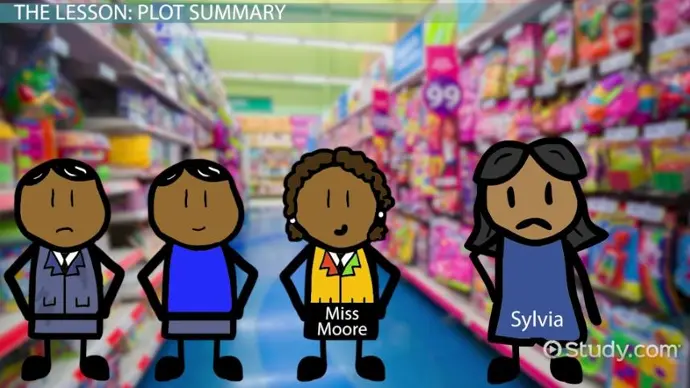The lesson
Analysis through Critical Race Theory by Kai, Joshua, Ethan

Kai, Joshua, and Ethan begin to introduce the short story "The Lesson", they will be presenting an analysis through Critical Race Theory (CRT). They begin the presentation with a question to engage the audience, they ask if race is a social construct or inherently biological? They then proceeded to explain it, also mentioning the 5 tenets of CRT. Race is a social construct and racism is systemic due to the manifestation of racism in literature and media of the dominant groups. "The Lesson" is a short story about Sylvia, a young black girl who lives in NYC in the 1970's. A college-educated Black woman named Miss Moore often takes Syliva and her friends on outings. ONe day, she takes them to a toy store, and Sylvia gets increasingly frustrated at the expensive prices and demands causing them to leave. Miss Moore later tries to teach the children about health inequality and only one child, Sugar, engages. While Sugar realizes the injustice of the situation, Sylvia attempts to stop her from engaging with Miss Moore. Power and privilege also plats a major role in this story, only. 4% of Black AMericans had college degrees in 1970. The presenters also discuss the historical context, it is essential to understand that there were many troubles in this time period, such as segregation and housing issues. Housing issues include the divide between white and black housing, pushing the black communities to seperated communities. Intersectionality is shown in this story through the different experiences each person has based on their qualities, such as race and gender. Stark differences are a telling tale of the inequality present in society. It is unfortunate to see the growing awareness in children, this is shown as the children start to realize how unjust the world is.
"you know, miss moore, i don't think all of us here put together eat in a year what that sailboat costs"
The last topic that the group covers is active resistance, "She can run if she wants to and even run faster. But ain't nobody gonna beat me at nuthin". Towards the end of the story, Sylvia is primed to face systemic racism. The presenters seperate the class into groups to host a activity that will ultimately deepen the audience's understanding of the Critical Race Theory. Each group is given a discussion question, the question I was personally given was "Should school boards be allowed to consider the colour of teachers when making layoffs?". I believe that this is essentially an act of reverse racism and is not a viable solution, school boards should focus solely on the performance on the teachers. Overall, this presentation was very interesting and provided lots of valuable information to carry onto real life, the presenters' use of quotations was very organized. The quotations proved each statement being made.